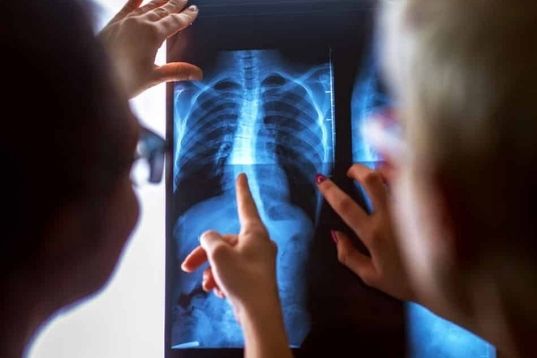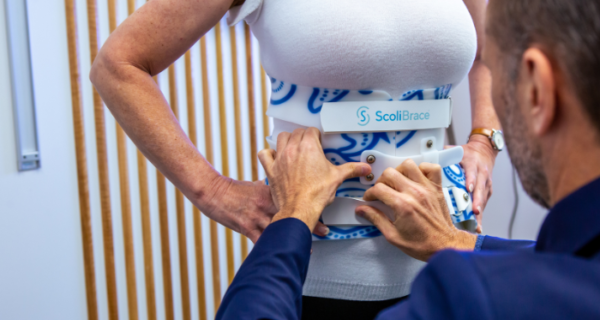What is the current evidence for bracing adolescents with idiopathic scoliosis (AIS)? Despite a somewhat controversial past of uncertainty, the evidence in support of bracing for AIS is increasing. One of the most landmark studies published has been the BrAIST study by Weinstein et al (2013). This team investigated the effects of bracing in AIS (1). Let’s look at this study in more detail.

What was the study looking for?
The objective of the authors was to determine the effectiveness of bracing, as compared with observation, in preventing curve progression to 50 degrees or more. This threshold was used because it is a commonly used indicator for surgery. To do this, the authors conducted a multicenter study that included patients with typical indications for bracing due to their age, skeletal immaturity and degree of scoliosis. They used a randomized cohort and a preference cohort. So, patients who were happy to be randomized were randomly assigned to bracing or observation. The preference cohort was allowed to decide their treatment.
The primary outcomes were:
- Curve progression to 50 degrees (treatment failure) and
- Skeletal maturity without this degree of curve progression (treatment success).
What types of braces were used?
A majority of patients assigned to bracing (68%) were treated with a customized Boston-type thoracolumbosacral orthosis. Future studies are required to compare brace types. It is possible that other braces could be more or less effective.
Why was the study stopped early?
The trial stopped early owing to the efficacy of bracing. In an analysis that included both the randomized and preference cohorts, the rate of treatment success was 72% after bracing, as compared with 48% after observation. There was also a significant positive association between hours of brace wear and rate of treatment success (p<0.001).
Is bracing effective for AIS?
Bracing significantly decreased the progression of high-risk curves to the threshold for surgery in patients with AIS. The benefit increased with longer hours of brace wear.
Take home message
Bracing has been shown by these authors to be effective as a treatment option for AIS. However, it is worthwhile noting that the success of treatment in this study was defined by the patient not reaching surgical threshold. In other words, treatment was considered a ‘success’, even if the curve progressed, as long as it did not progress to the threshold for surgery. This is a great outcome, but one might argue that some patients would prefer even better results. Remember that there are multiple reasons for treating patients with scoliosis, and while avoiding surgery is highly important, treatment should also consider other patient goals, such as curve stabilization or even reduction, as well as other signs and symptoms of scoliosis such as the postural deformity and imbalance (2).
Brace wearing time was also positively associated with better results. Future studies are required to investigate the possibility of the type of brace affecting treatment, particularly in highly compliant patients.
Bracing:
- Is an effective treatment option for patients with AIS who want to minimise the risk of the curve progressing to the point of surgery.
- Is more effective with longer hours of brace wear.
To read the research or explore other research relevant to scoliosis visit our research page here.
Author: Rosemary Marchese – Physiotherapist, ScoliCare Head of Education & Research
References:
- Weinstein, S., Dolan, LA., Wright, JG., and Dobbs, M. (2013). Effects of bracing in adolescents with idiopathic scoliosis. The New England Journal of Medicine. 369:16.
- Negrini, S., Grivas, T., Kotwicki, T., Maruyama, T., Rigo, M., Weiss, HR., SOSORT members (2006). Why do we treat adolescent idiopathic scoliosis? What we want to obtain and avoid for our patients. SOSORT 2005 Consensus paper. Scoliosis (2006) 1: 4.
Download PDF of this article.


